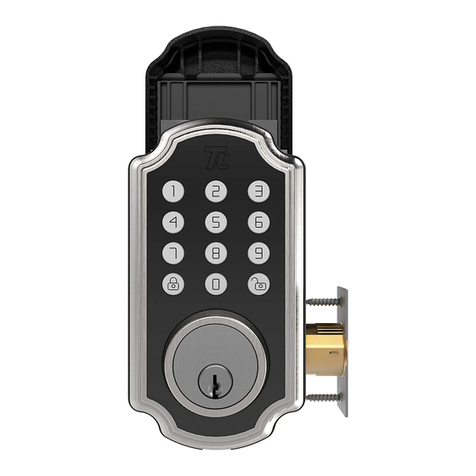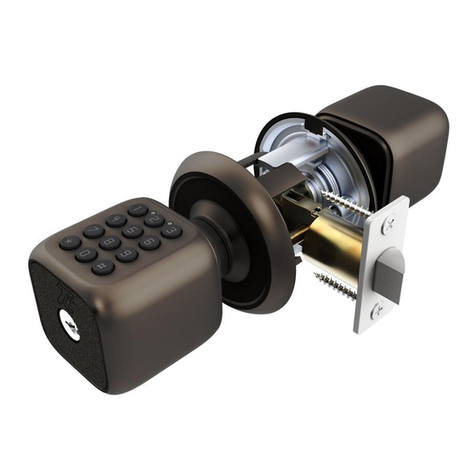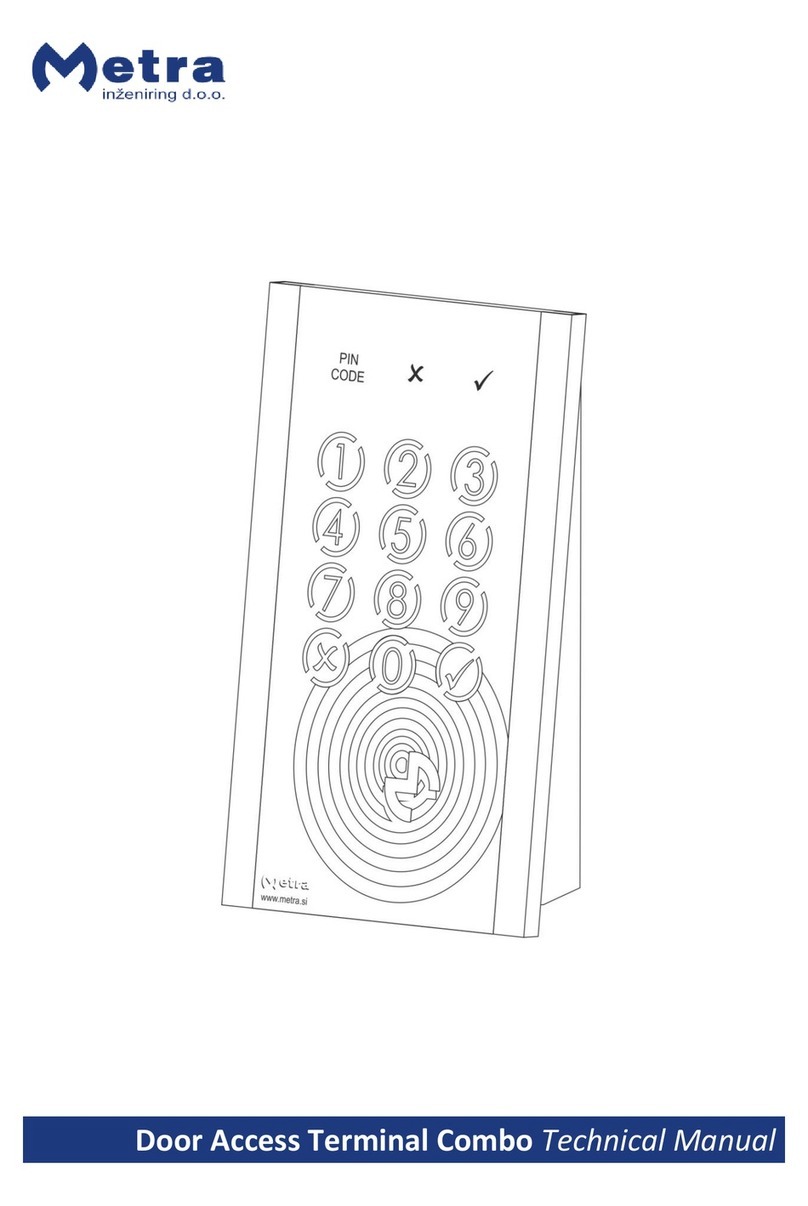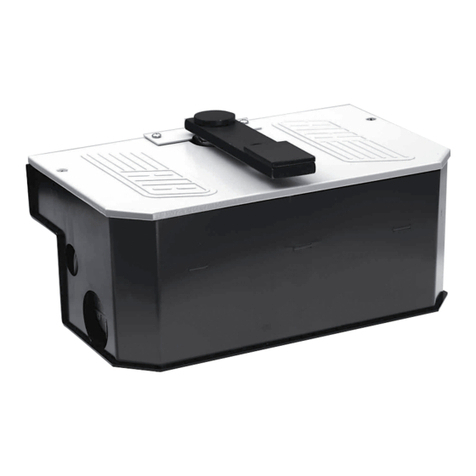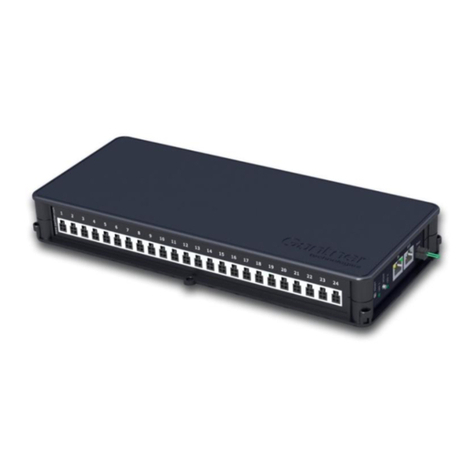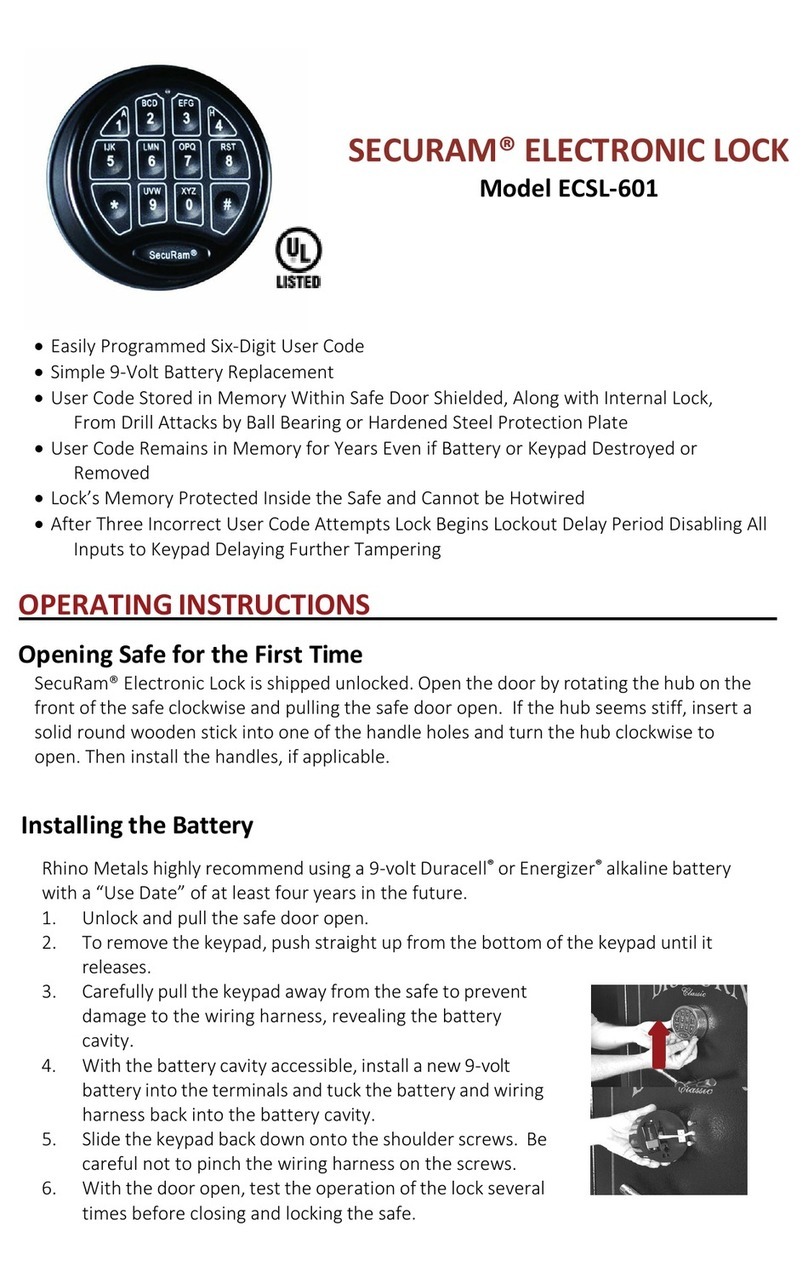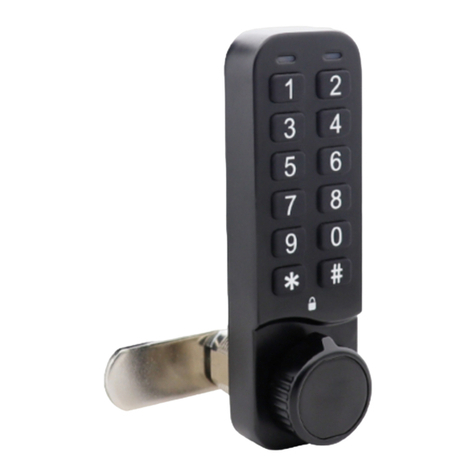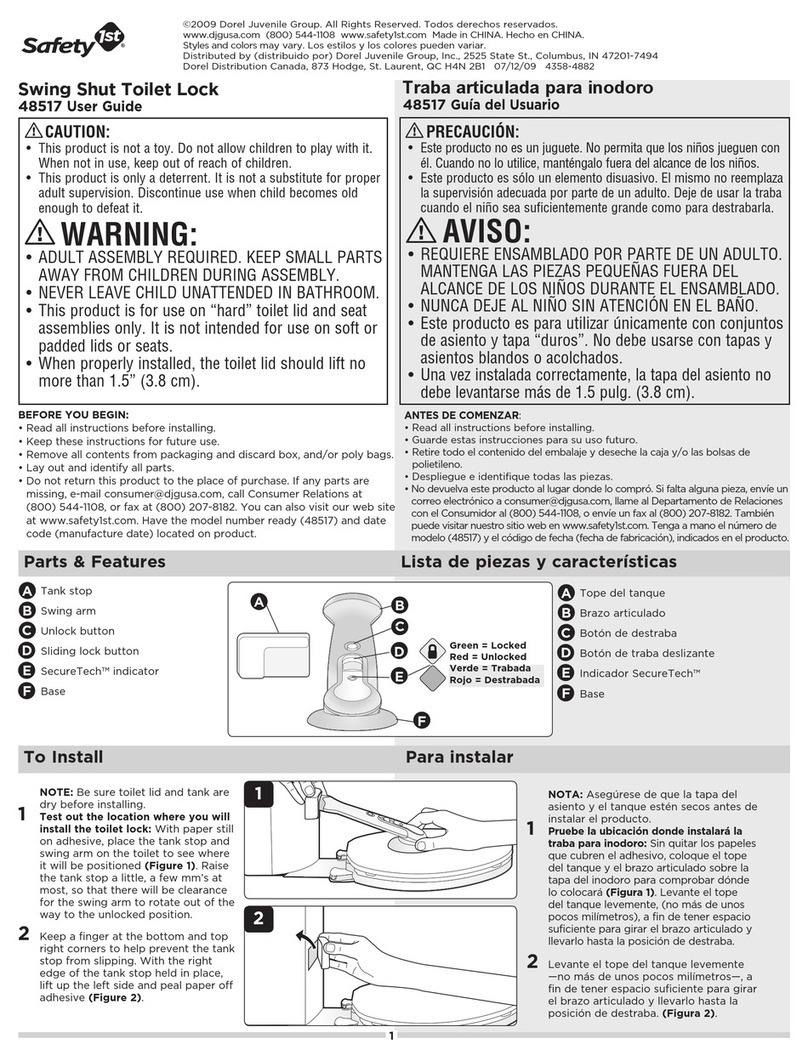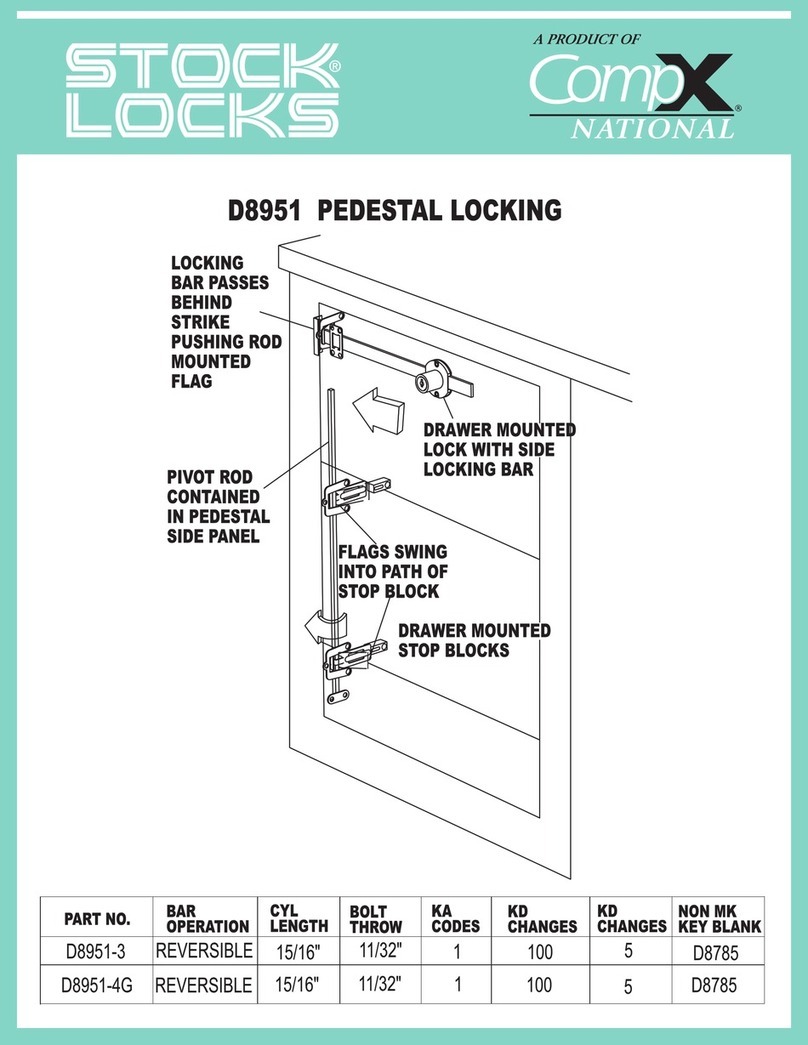
Part 1: Making the Opening
Step 1. Using the provided template, mark the locations for the centers of the
backset, latch hole and the screw hole.
Step 2. Bore a 54mm (about 2” or 2 1/8”) hole on door face. Then drill a
25mm (about 1”) hole into the edge of the door so that it intersects
with the larger hole.
Step 3. 8 3/4” (221.5mm) under the larger hole, drill a 3/8” (10mm) screw
hole to x the handle bottom.
Part 2: Installing the Latch
Step 1. Insert the latch into the hole. Using a pencil,
mark a line around edge of latch plate to
use as a guide. After marking at all four
sides of the plate, remove the latch. (Fig. 2)
Step 2. Chisel about 3mm (0.1”) deep or until latch
plate sits ush with door edge. (Fig. 3)
Step 3. Insert the latch into the hole and check it.
The latch’s plate should sit ush against the
edge of the door. (Fig. 3) If there’s too much space behind the latch or if it’s sticking out of the door the latch should be adjusted. If
the latch needs adjusted, move to Step 4; otherwise, skip to Step 5.
Step 4. Hold the front of the latch and the square opening from both sides, pull or push to extend or retract the latch end as needed. (Fig.
5) Insert the latch back into the door.
Step 5. Check the latch’s bolt and make sure the
rounded side faces in. Use the 2x wood
screws and a screwdriver (not included) to
secure them. (Fig. 6)
Part 3: Creating a Mortise & Installing the Strike
Step 1. Push the door until nearly closed and check
where the latch’s bolt touches the frame.
Step 2. Use a pencil to mark the horizontal center of the latch on the door frame.(Fig. 2)
Step 3. Open the door again and extend the line over the edge of the door and inside the frame.
Step 4. Measure the inside of the frame. Determine and mark the halfway point. From this point, use a
ruler to draw a line straight down so that it intersects the existing line. (Fig. 3)
Step 5. Use a 7/8” (22.2mm) spade bit and a drill to make two partially overlapping holes about 0.6”
(15mm) deep centered both above and below the center line. If needed, use the chisel to make
the hollow (aka “mortise”) more square. If you choose to use the strike box, you may need to chisel
slightly deeper. (Fig. 3)
Step 6. Hold the strike plate over the mortise. Using a pencil, mark a line around the edges of plate to use as a guide. After marking
at the straight edges of the plate, remove the plate.
Step 7. Chisel about 1.5mm deep or until strike plate sits ush with door frame. If you choose to use the strike box, you may need
to chisel slightly deeper.
Step 8. Position the strike and strike box, then use a pencil to mark the center points of the screw openings in the strike plate. Set
the strike and strike box aside and drill two small holes at each center point.
Step 9. Position the strike and strike box. Add the two remaining wood screws and use a screwdriver (not included) to secure them.
Part 4: Main Installation
Step 1. Start with the outside handle. Feed latch pin through the square hole in
the latch and thread the two pegs through the smaller, round holes. If
needed, have someone hold the door itself or hold the outside handle
at against the front of the door. And feed the screw holder at the
bottom of the handle into the screw hole. (Fig. 8)
Step 2. Align the inside knob on the back of the door to and use the 2x
mounting screws to fasten the it to the door. Make sure both screws are
tightened.(Fig. 8)
Step 3. Slide the spacer into the screw holder, then tighten the inside screw into
the screw holder, after that, cover the decorative cover. (Fig. 8)
Step 4. The lock should now be ready to use. Press the outside door lever or
turn the inside knob right to open the lock.
(Fig. 6)(Fig. 4) (Fig. 5)
(Fig. 2) (Fig. 3)
Latch Hole
Side Hole
2” diameter hole
8 3/4” (221.5mm)
Screw hole
3/8” (10mm)
diameter hole
1” diameter hole
(Fig. 1) (Fig. 7)
Mounting Screws
SpacerInside Screw
Decorative cover
Screw
Holder
Latch Pin
Inside Knob
(Fig. 8)
Door
Lever

